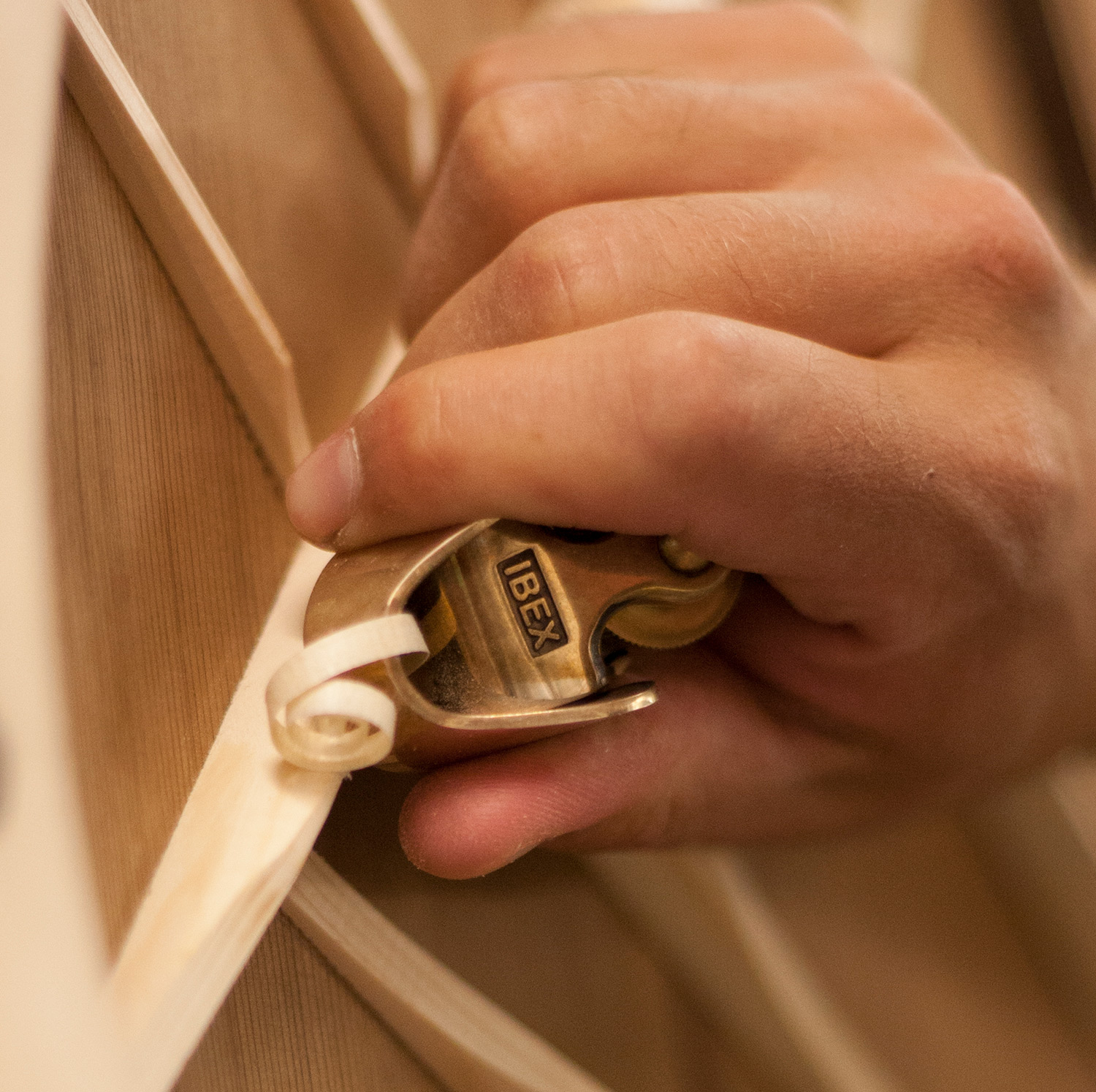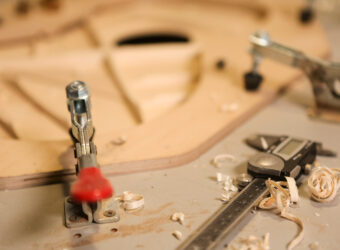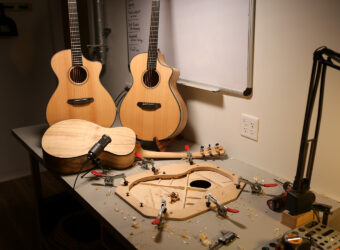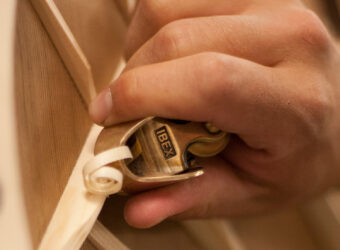 The Quest for a “Good Guitar”
The Quest for a “Good Guitar”
Ever heard the old adage, “You have to play ten guitars to find the ‘the good one’?” While ten might be a stretch, play two different guitars of the same make and model in the same store and you’ll probably notice that they sound profoundly different. That’s a problem. Who has time to hunt down a great sounding guitar among throngs of mediocre ones? And, shouldn’t all guitars of the same make and model sound the same? Why the discrepancies?
The reason that instruments of the same pedigree, even very high-end ones, produce inconsistent sound has to do with the history of guitar manufacturing in the United States and the incongruity of natural growth and industrial production.
Why Guitars Sound Different
Wood isn’t manufactured—obviously—it grows. Trees, like people, are individuals, meaning that two trees of the same genus growing in the same forest will experience significantly different life histories, causing the wood from those two trees to vary in shape, weight, grain, and density. Even boards cut from the same tree can differ in density by as much as 30%. No two boards are exactly alike, even when sculpted and milled identically. So, if you build two guitars to the exact same specs, using wood from the exact same tree, they probably won’t produce the same voice. One might sound flat while the other sounds incredible, and that latter one is “the good one.”
How did guitar manufacturing wind up in this odd predicament where players have to seek out the few resonant individuals among a pack of mediocre instruments? Before industrial production, all instruments were hand-built by luthiers familiar and comfortable with the innate variability of wood. The original masters of the Spanish Classical Guitar crafted each one according to the properties of the wood they had, tap tuning and refining until the end product played perfectly. They built spectacular instruments, but the time and effort required for such a process meant that only the wealthy could afford music.
Industrial guitar manufacturing began in the United States in the late 1800s. These new factories were not striving for exquisite tonal balance but populist production, churning out affordable, durable, flat top guitars for the masses with the lowest possible production costs. The modern steel-string guitar was not born of high-brow, artisan tinkering; it was a tool of utilitarian musical capitalism, and the specter of that history lingers on the racks of your local music shop. Most of your favorite guitars are still built as production instruments. The technology and efficiency has improved, but the process remains formulaic. The dynamic nature of wood is incompatible with the repetition of factory production. As a result, some individual guitars ring sonorous and others of the same make fall flat.
The Truth of Sound Optimization
Embarking on an epic quest to find an instrument that sounds exceptional may sound like fun to some, but for most of us, it’s just a pain. And if you’re looking to purchase online, such a quest is impossible. Sound Optimization is Breedlove’s solution to the inherent tension between wood variability and large scale production. We talk about Sound Optimization A LOT. There’s a reason for that. Sound Optimization is a big part of what sets Breedlove Guitars apart. Sound Optimization is a comprehensive, hand-voicing process blending the craft of traditional luthierie with modern technology to produce the most consistent, sweetest sounding guitars on the market.
All our USA made instruments are hand voiced in our workshop in Bend through an exhaustive four-step process. We begin with raw wood. Each board first gets sanded to a target weight instead of thickness and then tapped into a microphone. Our proprietary software program analyzes the sound it produces and measures its natural resonance. We then pair wood sets together that specifically harmonize at optimal frequencies. Those raw wood sets are cut, glued, shaped, and braced into tops and backs before being tap analyzed again. If they don’t hit their sonic targets, our craftspeople shave and adjust the bracing until they do. After that, the tops and backs go back to the workshop floor where they are assembled into full bodies before being tap analyzed once again. If they are not vibrating within our narrow target hertz range, we once again shave and adjust the bracing. We repeat this same process a fourth time after the neck, bridge, headstock, and other appointments have been added, ensuring that ever single USA made Breedlove produces rich, sonorous, balanced sound.
More Consistent, Better Sounding Guitars
Sound optimized instruments are more consistent, connected, and responsive. The entire guitar vibrates, top to bottom, front to back, with each part interacting collaboratively, minimizing any sonic conflict or unfavorable tonal qualities.With the top and back paired by voicing, the instrument feels alive. Never before have luthiers been able to apply this science so directly to instruments, and then put those guitars in players’ hands.
Breedlove Owner, Tom Bedell, explains, “Before Sound Optimization, you had to compromise between volume and projection, or overtones and complexity. We’ve worked really hard at giving you both of those.”
“Sound Optimization is not a gimmick,” he laughs, “it’s the truth!”
And the truth is that we’ve solved the problem many guitarists have long faced. If you’re buying a Sound Optimized Breedlove guitar, you don’t have to go on a quest to find “the good one.” Every single on is “the good one.”




